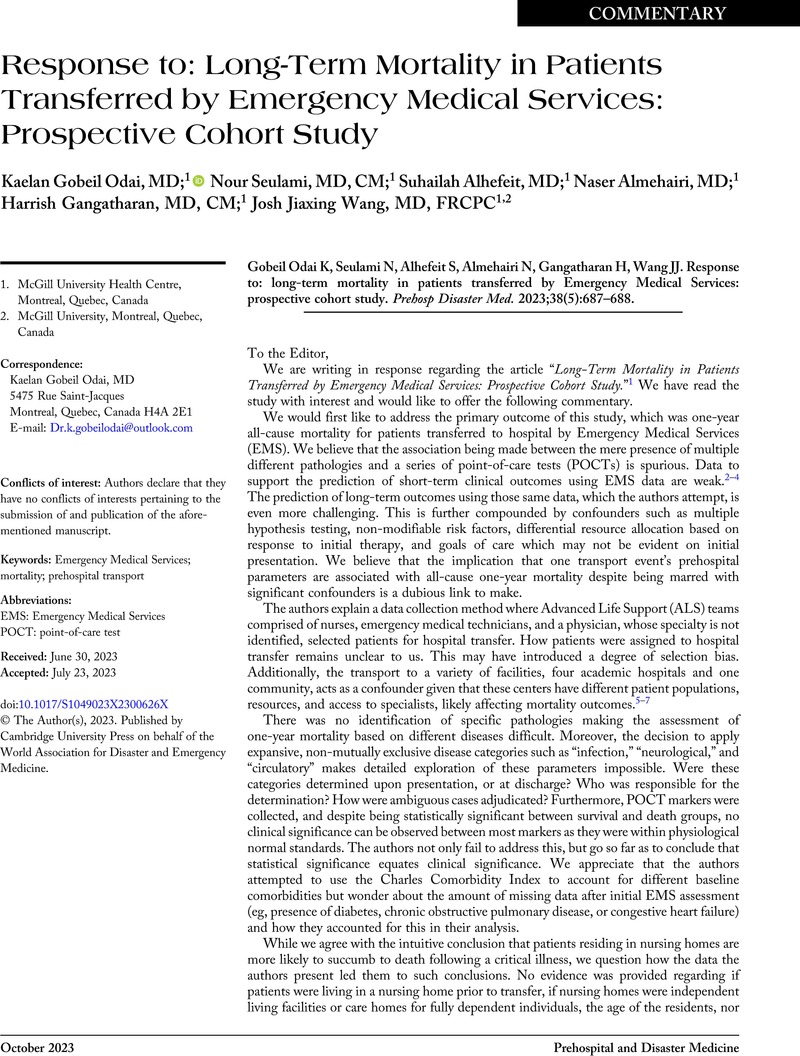Crossref Citations
This article has been cited by the following publications. This list is generated based on data provided by Crossref.
Martín-Rodríguez, Francisco
Enríquez de Salamanca Gambara, Rodrigo
López-Izquierdo, Raúl
and
Sanz-García, Ancor
2023.
Reply to: “Response to: Long-Term Mortality in Patients Transferred by Emergency Medical Services: Prospective Cohort Study”.
Prehospital and Disaster Medicine,
Vol. 38,
Issue. 6,
p.
818.




